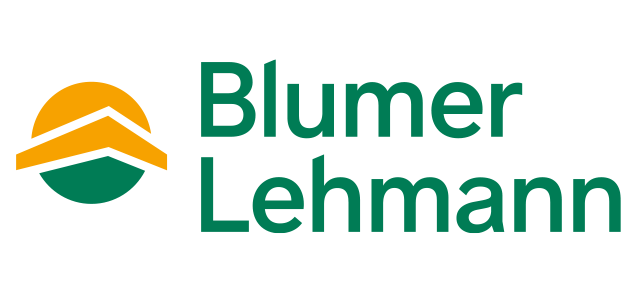Clear targets for a small carbon footprint

The subject of sustainability is on everyone’s lips and is also on our minds at Blumer Lehmann. These days, it is no longer enough just to work with a sustainable raw material, we also need specific measures that will benefit our environment. We have therefore defined clear sustainability targets across our entire value chain and in all three dimensions of sustainability: environmental, social and economic. Josephine Bartz, Head of Sustainability at Blumer Lehmann, answers questions about her responsibilities and the latest figures.
Josephine, what issues exactly are you working on?
JOSEPHINE BARTZ The subject of sustainability is very broad. In addition to aspects that primarily concern climate protection, social, economic and other business issues are also coming increasingly into focus. At the moment, my main concern is to find out how much energy is consumed by the various activities in our different divisions and how many CO2 emissions are generated. This relates specifically to our production plant at Erlenhof in the timber industry, the components we produce in silo and timber construction, and the buildings we erect. Our external locations will then be taken into account in the next 2023 carbon footprint calculation.

Josephine Bartz is responsible for sustainability at Blumer Lehmann.
Sustainability reports
What can you tell us about the CO2 emissions at Erlenhof and how did you work them out?
JOSEPHINE BARTZ Compiling the consumption data is a very complex task, for which I also rely very heavily on the support of staff in the various areas. Thank you to everyone for their always generous help.
What is the overarching aim of this ‘collection of figures’?
JOSEPHINE BARTZ The figures from the different sources of emissions will be brought together later in a centralised monitoring system. Over the next few years, we intend to determine comparative figures and, of course, define corresponding targets and measures for improvement.
What were the biggest sources of CO2 in 2022, i.e. our hotspots?
JOSEPHINE BARTZ One of the biggest CO2 emitters is clearly our fleet of forklifts and other vehicles that are used for production at Erlenhof and for journeys to construction sites.
How do you see us in general compared to other companies?
JOSEPHINE BARTZ Compared to similar companies, we are in the middle. One advantage is our closed timber life cycle at Erlenhof. But every ton of CO2 that we save or reduce is relevant.

Sustainable use of wood at Blumer Lehmann

Have we set ourselves specific reduction targets?
JOSEPHINE BARTZ Yes, we want to make ongoing improvements in the different areas (Scope 1–3) by 2030. We have therefore set ourselves targets and defined the necessary or appropriate measures to achieve them.
«Every tonne of CO2 that we save or reduce is relevant.»Jospehine Bartz

And how will we manage to keep reducing our emissions year after year?
JOSEPHINE BARTZ We want to achieve this by continually switching our fleet to electric vehicles and, if necessary, making the fleet smaller. The construction of the new production and office buildings will eliminate the consumption of heat, electricity and refrigerants at our external locations. This will benefit us in terms of reducing CO2.
JOSEPHINE BARTZ We also want to reduce our air travel, transport fewer building materials by air and create climate-friendly alternatives and incentives for our employees’ daily commute to work. With the development of new products such as CLT-clever, we want to increase the yield of round timber and thereby store more CO2 in the wood in the long term.
«In addition to aspects that primarily concern climate protection, social, economic and other business issues are also coming increasingly into focus.»Josephine Bartz
We now want to publish our first sustainability report. What standard will it be based on and what information will it contain?
JOSEPHINE BARTZ As already mentioned, sustainability involves more than just climate protection. Employee-related and social aspects as well as sustainability-related information about our supply chains, suppliers and customers will also have their place in the report. We will try to meet the ESRS standard in the first report, but we are not yet 100% complete. We will gradually add further information and build up the corresponding reporting.
One final question: how relevant are supply chains for our sustainability?
JOSEPHINE BARTZ Transparent supply chains are important to us in ensuring that we support legal and sustainable business practices. This is also required by law in the EU and Switzerland. At Blumer Lehmann, the supply chains are already very well known. We know which country or region the wood for our timber products comes from. But these traceability requirements will continue to increase in the coming years. Another milestone for my work is therefore the development of a supply chain management system in which each individual step of the supply chain is described in detail. That way, we will be able to safely rule out unsustainable practices or illegality.



